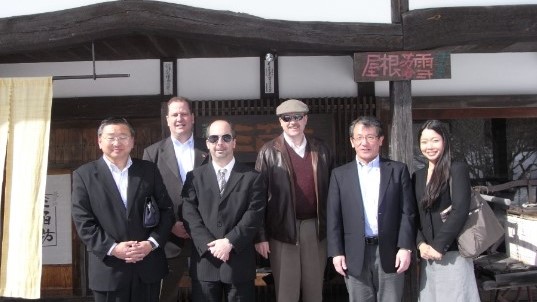Remembering March 11, 2011, Poignant Memories of a Day I’ll Never Forget
March 11th was a crisp spring day in Japan. Cherry blossoms were peeking out in Tokyo and it was good to be alive. I was on the last day of a week’s business in Japan, tomorrow I would be heading home.

The final event was a visit to Chiba with colleagues from CW Japan to attend the annual JAS Lumber Grading Championship and I would participate in congratulating the winners.
I can remember with pinpoint clarity sitting on the train showing my mates photographs on my iPad. At 2:46 PM Japan Standard Time, the train stopped at an elevated Skytrain-like station and everyone promptly exited leaving me in my seat, iPad in hand. I wondered what the heck was going on? (Automated quake pre-warning.) Just as I crossed the threshold of the carriage door a tremendous noise and shaking started. It was impossible to stand. I crouched gripping desperately to one of the steel columns holding the station up. Had a train from the opposite direction come off the tracks at speed and was about to collide with the station? But the shaking went on and on.
Finally, after several minutes the shaking subsided. It was clear that the train was going nowhere. Passengers filed in an orderly fashion down the steps and into a tiled courtyard. In shock, I realized the tiles under my feet were burbling from soil liquefaction. Off in the distance fires had started in the industrial district which surrounded us. In the far distance, we could see an oil refinery or storage depot on fire.
As we collected our wits, my colleague Kevin Bews looking at his phone said a massive earthquake had just hit Japan. At that moment an aftershock of 7.4 hit. Beside our commuter line ran a high Shinkansen (bullet train) viaduct. It swayed and shook and its overhead electrical poles twanged with an incredible electric guitar sound. We stood transfixed.
Kevin then said a 10-meter tsunami warning has just been issued. I said – “where’s the sea?”. He pointed – “right over there!”. I saw the water a few hundred yards away; the terrain around us, as far as the eye could see was pancake flat. It was time to get going!
There were no taxis or any chance of a ride. It was shoe leather time. We started to move smartly inland. The only high points were highway overpasses. It seemed like we were alone in this post-apocalyptic industrial area. Sirens and smoke from fires laid a backdrop. We trudged and trudged, odd-looking refugees in suits lugging briefcases. As we got further inland I continued to look nervously behind me half expecting at any moment to see a tsunami rearing up. Continual aftershocks kept our legs moving.
After a couple of hours, we reached a residential area. Occasional taxis were returning from Tokyo laden with residents fleeing the city center. We finally commandeered a taxi and asked to be taken into the city. Dusk was falling. As we drove into the outskirts of Tokyo hundreds of thousands of commuters streamed out. The trains and subways were down.
I reached the Hotel Okura near our office. The lobby was packed with people who had come for the day to business meetings and seminars. They were being handed blankets and would sleep wherever they could find a space.
Reaching my room I turned on the television. Shocking images aired of tsunami waves inundating Northern Japan. Desperate attempts were being made by Tokyo Electric to prevent the Fukushima nuclear reactor from running out of control. Earlier in the week, we had visited the Tohoku region, its low-lying areas now horrific scenes of tragedy and great heroism. It was chilling to realize that a hundred kilometers from Chiba entire communities had been washed away. (We had been saved by the Ibaraki peninsula, the eastern side of which had blunted the force of the tsunami.)
As I sit here exactly 10 years later on March 11th, 2021 another fine sunny day peers in through the window. Thoughts and recollections wash in. (Our personal CW experiences were of course trivial compared to most.) I was extremely impressed by the capacity of Japan and its stoic population to cope with an unprecedented national catastrophe. How would Canada fare under similar circumstances?
I recalled almost unbelievable stories of survival like the small town Tohoku mayor who told us how he clambered up the radio aerial on the 4th floor of his office and hung on for dear life in snow squalls overnight while successive tsunami waves ebbed and flowed beneath him. Standing outside a damaged hospital overlooking a town’s harbour and seeing the high watermark on the hospital wall – waves had reached 80 feet high.
The state of Japan’s national infrastructure and quality of its building codes prevented an even greater disaster. Very few people were killed by the magnitude 9 quake, it was the tsunami that did the damage.
Life is precious and ephemeral. Things can change in an instant. Live life to the fullest.
Today we remember those who lost their lives on that sunny day 10 years ago.




